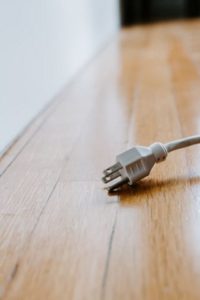

How to Choose the Best Power Extension Cord?
Extension cords are godsend gadgets that keep electric power flowing across our homes or workplaces. From powering devices like TVs and computers to powering drills and welding paraphernalia, their contribution is invaluable.

Given their crucial role, you need to own a reliable power extension cord. However, most take buying extension cords lightly, yet the effects of using low-quality cords can be dire, resulting in death.
So, how do you find the best extension cord for your home or workplace that's ideal for your electric needs? Find out in this comprehensive buyers’ guide.
Length Matters
Power extension cables come in varying lengths, from one foot to 100ft long. While the extension cord’s length may seem random, it plays a significant role in facilitating efficient electric current flow.
Although buying a longer extension cord than you need seems to be a great idea, electric resistance increases with distance from the power source. Reduced power, in turn, can overexert an electric device's motor, leading to device damage.
Buy a short power cord, and you might need to connect more than one to extend the power here needed. But this is not advisable as it can cause an electric fire.
Therefore, the ideal extension cord length requires finding the correct balance. So, go for ample length but don’t buy an excessively long extension cord.
Consider the Extension Cord’s AWG Rating
The AWG (American wire gauge) is an American grading system used to denote an electric wire’s thickness. AWG ratings matter because thicker wires have a better current-carrying capacity.
When it comes to AWG ratings, a lower AWG rating is better. For instance, an AWG10 extension cord can power devices with higher amperage, while AWG16 extensions power low-amperage devices.
The AWG rating denotes the number of wires interwoven to reach a preset cross-sectional area. So, an AWG10 code features ten interwoven wires, while the AWG16 wire features 16 interwoven wires.
A Single thick wire has more atoms to facilitate electric conductivity than a single thin wire. While combining thin wires may increase the cross-sectional area, it does not increase the number of current-carrying atoms.

Buy a power extension cable with a befitting AWG rating for your use. AWG14-AWG16 is ideal for light use, AWG12 moderate use, and AWG10 and below for heavy-duty and industrial use.
Consider the Ingress Protection (IP) Rating
The IP rating system denotes the degree of protection a mechanical casing, like a wire jacket, gives a device or object. It denotes protection from elements like water and humidity, fluctuating temperature, dust, and weather elements like wind, slit, and snow. So, IP rating is fancy for an outdoor rating.
IP ratings feature two digits; the first digit representing solid protection and the second digit representing liquid protection. A higher figure for both solid and liquid protection figures is preferable when selecting the ideal power cord for outdoor use. The IP outdoor rating also includes an outer wire jacket that withstands cold temperatures.

Closely related to the IP outdoor rating is the extension cord's intended use. Most heavy duty extension cords are outdoor-rated, while most indoor medium and light-duty cords only feature an indoor rating.
Designation Letters
Besides reading IP ratings, you can also tell an extension cord’s outdoor rating by checking the designation letters cost on its outer jacket.
Designation letters refer to a series of letters on a power extension cable’s jacket denoting select specifications. The lettering system comes from electric appliances regulatory authorities and certification agencies. For instance, the designation letter on an outdoor-rated cable is "W."
Other common designation letters that you may encounter while shopping for a power extension code include “S” denoting general use, “O” denoting oil resistance, “P” for an extension cable featuring a vinyl thermoplastic jacket, and “J” for an extension cord cable with the standard 300V insulation.
These designation letters are just examples. You want to check out electric cable designation letter charts to understand them better and ease your shopping.
Safety Features
Although responsible power extension usage goes a long way in ensuring consumer safety, buying extra safe extensions is advisable. Therefore, consider buying extension cords with safety features to prevent electrocution and fire hazards.
One such feature is an integrated group-fault circuit interrupter (GFCI) that functions as a circuit breaker and grounds current should an electric malfunction occur. The polarized ends on adaptors and connectors on a power extension cable also function as safety features.

Moreover, you can also opt to buy a three-prong power extension cord over a two-prong extension cord. The grounding throng on a three-prong plug protects against electric malfunctions like power surges and potential electric fires.
Consider Purchasing Certified Power Codes
Besides generating designation letters, electric appliance certification organizations offer independent testing services to cable manufacturers seeking product verification.
Willing manufacturers submit their power cables which then undergo standardized testing under applicable industry standards and best practices. The Underwriters Laboratories (UL) certification is arguably the most popular certification body for power cords and other electronic appliances in the USA.
Other notable electric cord certifications include CE, EMC, FCC, and CSA. When you buy certified power extension cords, you get value for money and durability.
Conclusion
Buying the ideal extension code is the first step towards protecting your household and workspace from electric hazards. However, other safety practices and proper extension cord maintenance are crucial. Finally, remember that even the best extension cord is not a substitute for permanent wiring.
